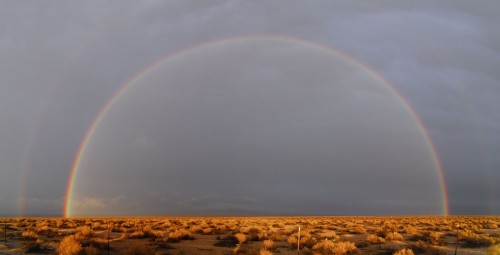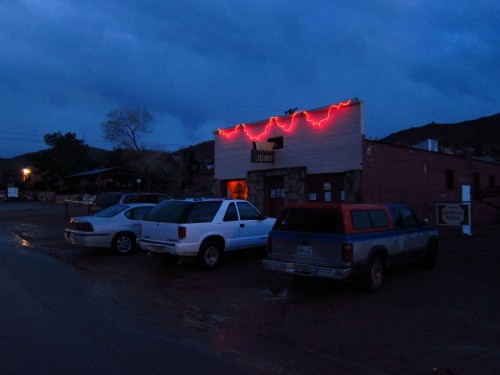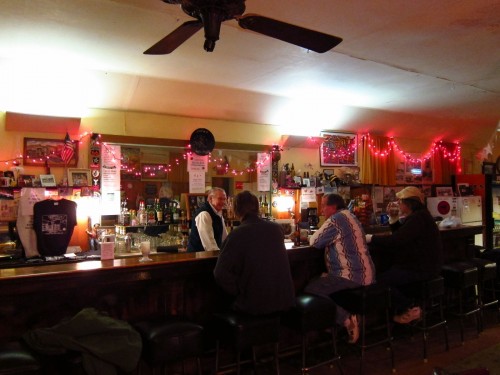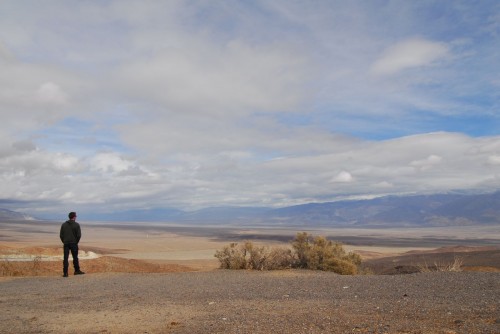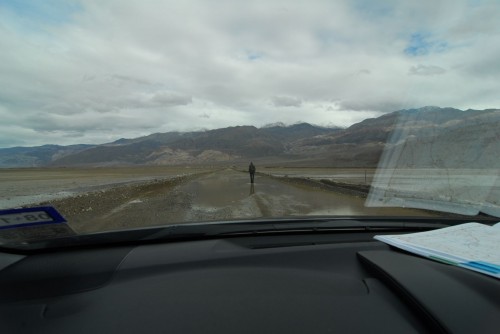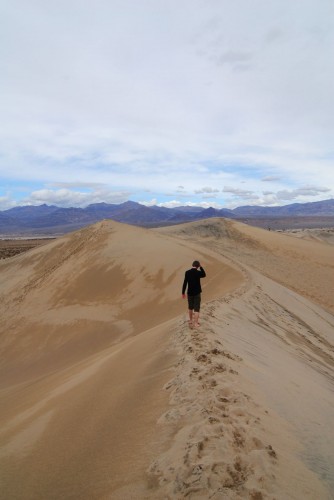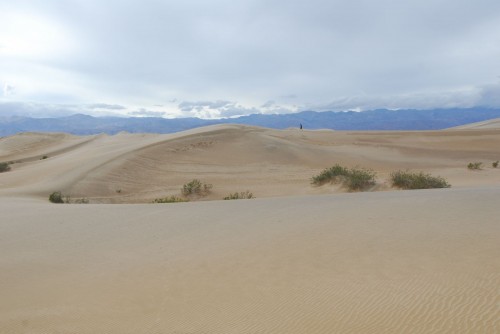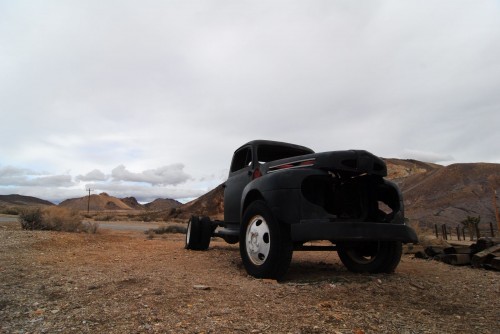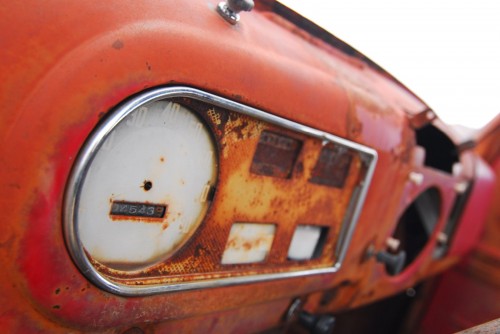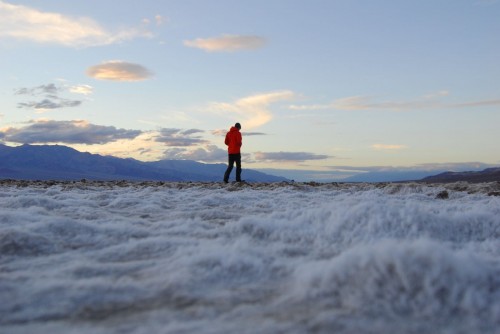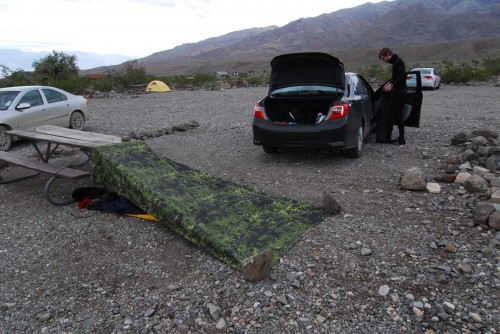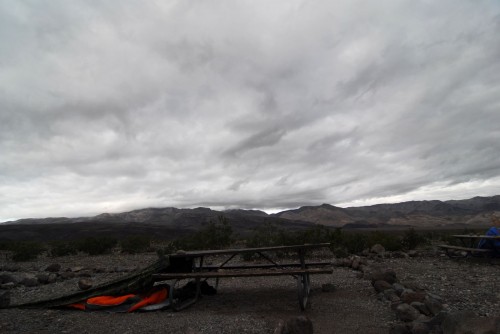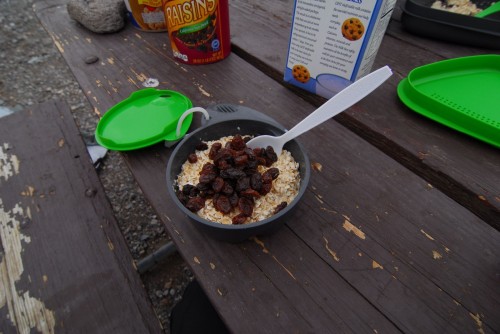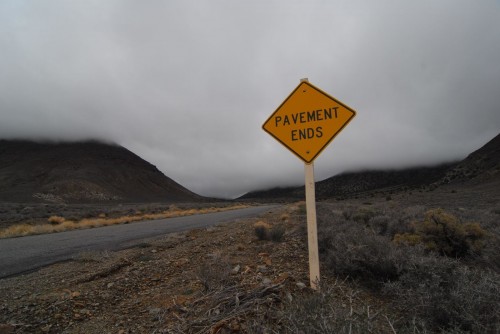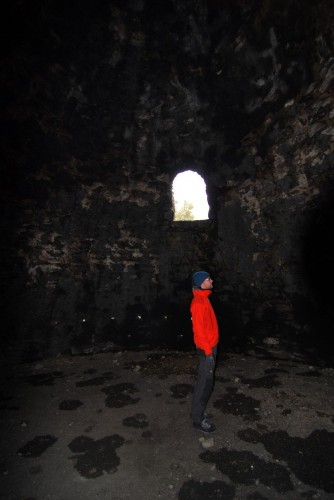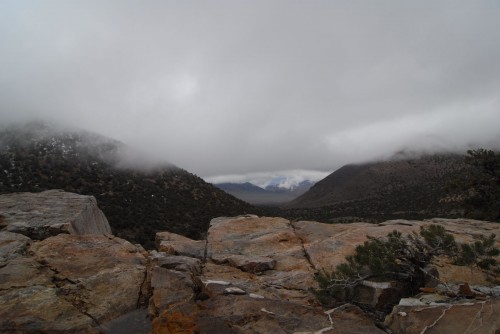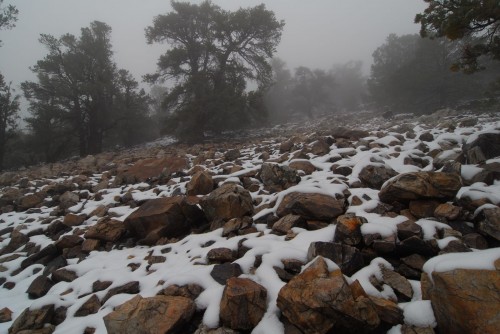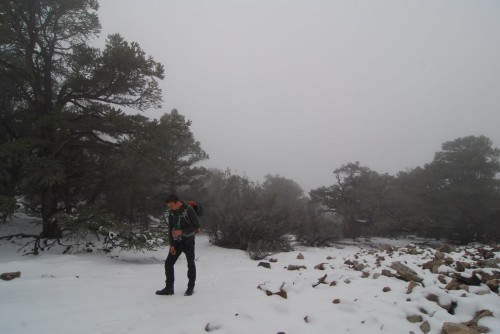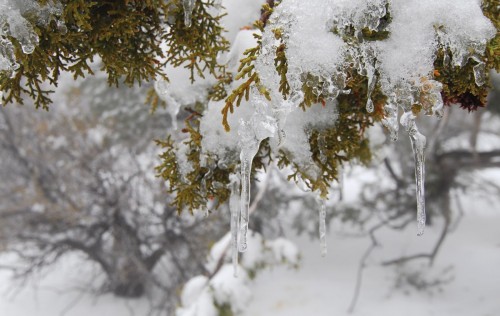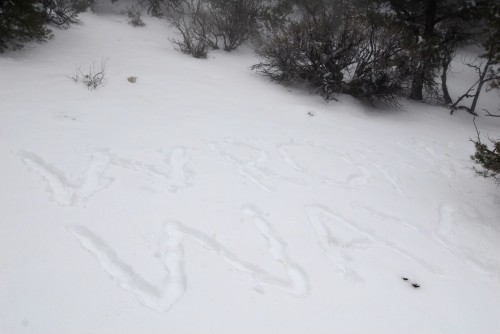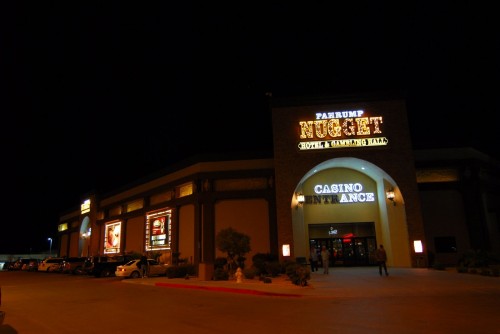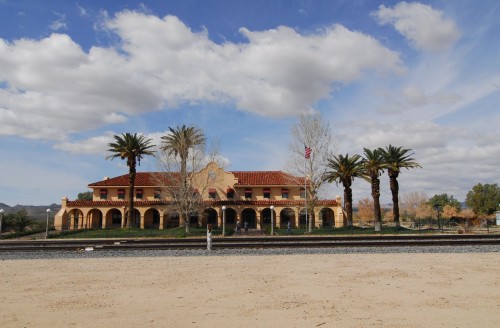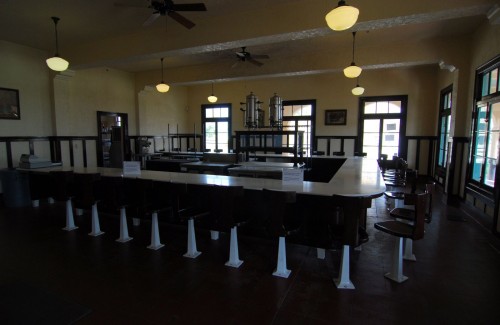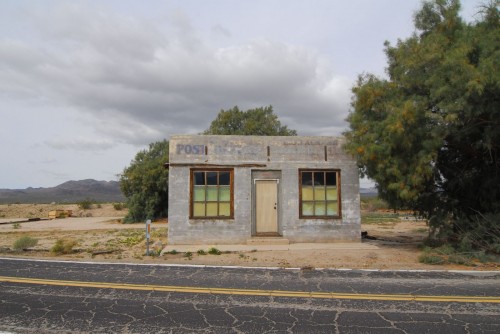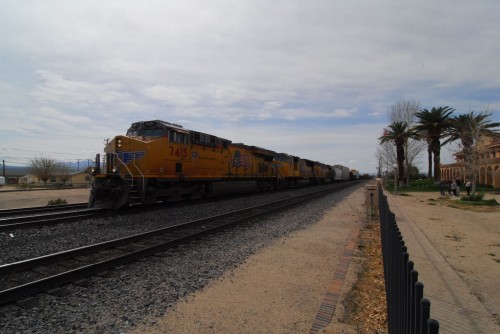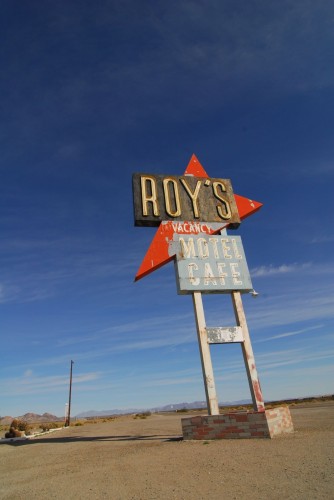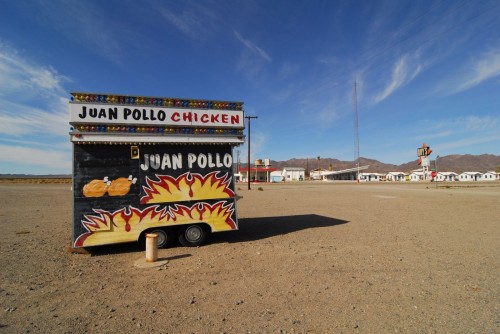Death Valley
Anders just spent 5 months in Chicago as part of his PhD. A happy coincidence was that he was ending his stay by attending a conference in San Diego. We met up and of course had to take a road trip. We investigated whether it was feasible for him to rent a bike so we could take a proper road trip, but that was crazily expensive, so we had to fall back on a rental car. We had set off 4 days to make a loop up to Death Valley, a fascinating place. We took off around noon on a Friday in the worst rainstorm southern California has seen this year. Currently here is a drought, so I’m sure the water was welcome, it was just badly timed for us. We crossed our fingers and hope it would stop before we reached Death Valley. That turned out to be a great decision.
The first day was mainly used to get up north of Los Angeles. After a few ours we turned onto the impressively straight US395, which runs through the north western part of the Mojave Desert towards the eastern edge of the Sierra Nevada mountains. The pouring rain had turned into a beautiful sunset, and we were treated to the most beautiful rainbow I have ever seen – a full 180 degree double rainbow.
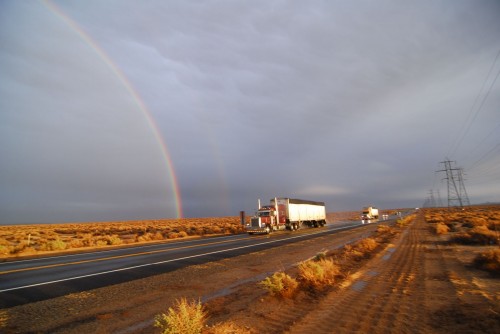 We were planning to stay the night in Ridgecrest, and going there we took a small detour past the near-ghost-town of Randsburg, which is a haven for offroading. Also, the local general store serves some exquisite chocolate milkshakes. Unfortunately, we arrived after dark, in the off season, in the rain, so the town was even more dead than usual. In fact there was on one place with the lights on: The Joint. We looked at each other and there was no doubt we had to check that place out.
We were planning to stay the night in Ridgecrest, and going there we took a small detour past the near-ghost-town of Randsburg, which is a haven for offroading. Also, the local general store serves some exquisite chocolate milkshakes. Unfortunately, we arrived after dark, in the off season, in the rain, so the town was even more dead than usual. In fact there was on one place with the lights on: The Joint. We looked at each other and there was no doubt we had to check that place out.
We expected a small saloon where the 4 locals at the bar would look up sceptically when we entered, and that was exactly what it was. Anders ordered a local beer “brewed right up on the highway,” and I got a cup of lukewarm coffee since I was driving. And then the stories began. The bartender, who himself was no whippersnapper, has inherited the bar from his mother, who had opened it back in the 50s. We were told that today’s rain had been the worst for at least 10 years and got the story of one of the patrons’ short career as a German teacher – I don’t think he spoke a single word German. After about half an hour, the stories began to peter out, and the bartender began to look like he wanted to close up the place – as opposed to the three guests, who were in an excellet mood for another beer. We decided to push on to Ridgecrest.
After having checked in to the local chain motel, we ventured into the town to find dinner. Kristy’s Family Restaurant was a proper diner: everything was in shades of brown. The carpet, the lamps, the tables, the worn leather on the benches, the tanned and wrinkled face of the waitress, and the gravy on the mashed potatoes. In the background “Brown Eyes Girl” played on the stereo. In one corner sat two WW2 veterans, trying to use a laptop computer, in the other a team from the local sheriff’s office – 4 guys in bulletproof vests with gun holsters at their sides and a single plainclothes officer. The waitress knew all the guests and the mood was friendly enough to make up for the mediocre grub.
The following morning, we were ready to conquer Death Vally, which we entered from the east through Panamint Valley. When you’re past the impossibly sad and still active mining town Trona, Panamint Valley opens up into incredible vistas which could have been a national park just at easily as its sister to the east. On the way, we decided to pass by the ghost town of Ballarat, but after a slow 3 miles on a flooded gravel road we just arrived at two sad looking mobile homes and no ghost town. We turned around.
First stop in Death Valley was the formidable Mesquite Dunes. From the parking lot we determined the tallest dunes and obviously had to scale them. Anders believed it would only take 10 minutes to get there, a vast understatement I had to point out, and it turned out to take 25. Easily worth the time, though.
Then we set our sights at Rhyolite on the eastern outskirts of the valley, another ghost town mentioned in our guide book. I might have too high expectations, since I’ve had the pleasure of visiting Bodie, but 7 ruins with only the foundations left did not do anything for Anders nor me, and we headed back into the valley.

The remains of Rhyolite – just skip that and go to Bodie instead. That’s only a detour of 500 miles…
We drove down to Badwater to exploit the last daylight. Badwater is the lowest point in the western hemisphere at 86 meters below sea level. When the limited amount of water evaporates, it leaves behind a carpet of beautiful salt crystals on the valley floor. After dark we went to the Harmony Borax Works to listen to a talk about 20-mule teams in the dark. They were used to pull enormous waggons of borax out from the mine to the railway station in Mojave. They ran constantly for three years until the mining company was aquired by a competitor after a bankruptcy, and closed down. Even though the mine was still profitable. The ranger explained to us that over the last two days, the valley had received one third of all the rain it would get this year. We were lucky and had dry weather all of our stay.
After the talk we had a fine, if expensive, burger at the Forty Niner Café in Furnace Creek (the have some great names for places in that area) and went to the free primitive Emigrant campground – the same place where Johan and I two years earlier had saved two Canadian girls from certain death (something like that), but that’s a story for another time. After some star gazing and a couple of beers, we hit the sack.
Sunday morning we drove a long tour out Emigrant Road, where we wanted to attempt to hike Wildrose Peak which should have great views over the valley. On the way there, we passed some charcoal kilns designed by Swiss engineers and built by Chinese workers. The supplied charcoal for the silver mine in Panamint Valley and are still in great shape despite having been abandoned for more than a century.
We set out on the path to Wildrose Peak, which soon began to be covered by snow. At the same time, we were basically walking inside a cloud, so it was impossible to say if we were actually headed to the good views – views that were probably not there that day anyway. After about an hour we were wading in a foot of snow and had lost track of the path. We carried on for a bit, but had to admit that we had no idea where we were going. We traced a “wrong way” warning in the snow to warn any other hikers who might have followed in our footsteps and turned around. Even though we didn’t make it to the top, it was a very nice hike. Death Valley is the hottest place on earth (by average temperature), but evidently there can still be snow on the peaks in the winter.
Last stop in Death Valley was Scotty’s Castle. It is a big mexican-style house built by the insurance millionaire Albert Johnson from Chicago in the early 20th century. He was originally trained as a mining engineer, but broke his back in a mining accident and instead he made a ton on money selling insurance. He had not completely forgotten about his mining dreams, though, so he let himself be talked into investing in the Death Valley gold mine owned by Walter Scott, known as Scotty. The payout never really materialized and after a while Albert decided to go to Death Valley to check out the mine himself. Now Scotty was in trouble. He was a bit of a con man and a storyteller and the truth was that the mine did not exist. What to do? Scotty ended up hiring his brother and some friends to stage a fake ambush, which would hopefully scare Albert away from the valley for good. In all the commotion, Scotty’s brother was hit by a bullet, and Scotty couldn’t help but yell “stop, stop, you idiots! You shot my brother!” after which all the bandits came down and helped save the brother. Albert though the whole ordeal was great entertainment and against all odds, the two became good friends. Albert then decided to build a ranch in Death Valley.
The story has many more great details than my little recap can cover, so drop by if you ever get the chance. It was my third time there, and since we were one the last tour of the day, we were only Anders, the ranger and me. She took us through parts of the castle you’re normally not allowed to go to and we got a few extra stories.
We left the park and headed south. We needed a place to stay for the night and aimed for Pahrump in Nevada, which on our map seemed to be a pretty big town. It was, but there was not a single motel. Probably because of its proximity to Las Vegas, so people just go there instead. We had no such plans, so we found a dubious casino to stay at.
Monday it was time to return to San Diego and on the way we passed through the Mojave National Preserve, which none of us had visited before. It is a godforsaken desert, but in the middle of it is Kelso Depot, which was a central railway stop up until WW2. The rails are still used frequently, but the depot is no longer relevant and the town has declined from 2000 inhabitants to just about none. In connection with the opening of the National Preserve, however, the depot itself was restored and today it houses a very interesting museum on the depot and it’s history.
The final stop of our trip was Amboy, a tiny hamlet with one inhabitant, next to the old Route 66. It is the home of Roy’s Motel and gas station, a fascinating view into Route 66 in its heyday. The motel was abandoned in the 70s as the customers disappeared due to the opening of the nearby Interstate 40, and it fell into disrepair. In 2005 the chicken-restaurant-millionaire Albert Okura bought the whole town for $425,000 and reopened the gas station in 2008. Apparently, he also wanted to reopen the motel, but that has not happened. The lobby is still elegantly 70s orange and brown, and on the tables the daily newspapers from sometime in 1973 has been left, waiting for the next customer.
We arrived in San Diego in the early evening after a very nice road trip around SoCal. I returned to the lab the next morning and Anders flew home to prepare Bob for a European round-trip in April.

